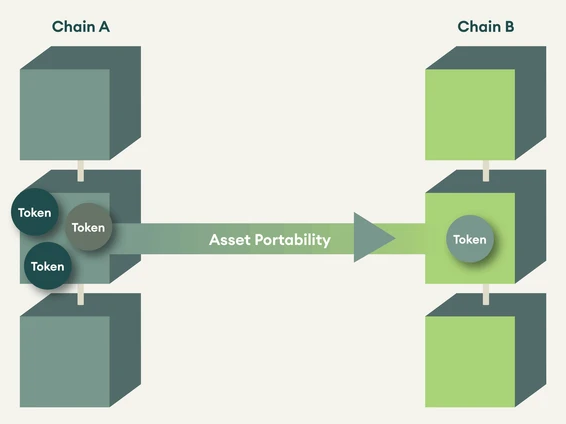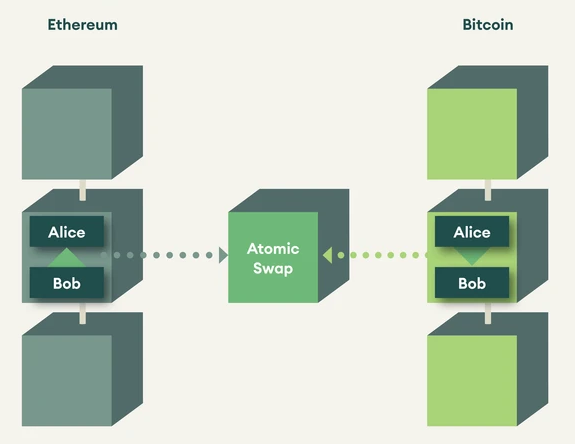Interoperability is the ability of software to exchange information between different ecosystems. In the case of blockchains, it has the potential to break the silos and to create a network of blockchains: A broad overview of blockchain interoperability and the Polkadot project.
More and more people are considering blockchains as safe and promising. Thousands of projects relying on different blockchains have emerged in the last few years. They have specialised in payments, smart contracts platforms, data storage solutions, supply chain management, to name a few. These blockchains are either public or private and have made different choices in terms of security, scalability, and decentralisation, each with unique governance and a specific consensus algorithm.
As a result of all these choices and goals, there are no universal standards for blockchain developments. The blockchain ecosystem is heterogeneous, and the potential of this technology remains untapped if they operate in silos. For instance, we cannot trigger a payment (supported by blockchain A) after delivery occurred (according to supply management blockchain B). The reason this cannot happen is that blockchains are not interoperable.
What is interoperability?
Interoperability is "the ability of computer systems or programs to exchange information" according to the Oxford Dictionary. In the current setting, blockchains work mostly in a silo, limiting the possibilities offered, their use, and finally their adoption. Imagine how "successful" would the internet be if WhatsApp were not interoperable with your smartphone camera, Facebook with YouTube, and Amazon with a credit card payment system?
Soon, we can extend interoperability to a broader set of assets and activities. These activities can be - a blockchain land register enabling you to pledge your ownership rights on a borrowing/lending platform to get a mortgage; or your digital identity secured on a chain allowing you to unlock your bank account and get access to the social security system.
The current blockchain ecosystem looks like a thousand island archipelago with each island as a separate blockchain project. It is a complex landscape tough to navigate. Interoperability allows blockchains to communicate, to exchange data, and value. Interoperability could break silos and act as a catalyst for mass adoption of cryptocurrencies.
Opportunities
Interoperability would facilitate the communication and exchange of value between blockchains. In this section, we present different functionalities that emerge with interoperability.
Atomic Swap
An atomic swap is an exchange of token ownership on two blockchains. Imagine that Alice and Bob both have Bitcoin (BTC) and Ethereum (ETH) wallets and Alice wants to exchange BTC for ETH and Bob wants to exchange ETH for BTC. Interoperability would allow for a peer-to-peer and secure transfer of ownership, as illustrated in figure 1.
Figure 1: Atomic Swap
As the name indicates, it is a swap of assets, and it is atomic. Atomic means that it is either executed fully or not executed at all. It does not allow partial execution, meaning that it is not possible only for Bob to receive the asset from Alice but not the other way round. Atomic swap eliminates the counterparty risk.
Asset portability
Asset portability is the ability to move a token (or a fraction of it) from one blockchain to another whilst maintaining its history in the first blockchain, as illustrated in figure 2.
Figure 2: Asset Portability

An example of its application would be a healthcare ledger that securely stores our whole health data of patients. A patient may then, fully or partially, send the data to another ledger (health insurance, hospital or the attending physician). It improves the quality of the data as it would be recorded and aggregated on one chain and let the patient retain the ownership of their data.
Cross-chain oracles
Cross-chain oracles allow one blockchain to decide on an event it observes on another blockchain.
- Say a financial platform A built on Polkadot allows liquidity providers to stake collateral on Ethereum and employs a Chainlink solution to monitor its value. If the value of collateral on Ethereum falls below a threshold, a liquidation will get triggered on platform A.
- Using a supply management example, one can imagine firm A using its blockchain supply management solution to wait for its supplier to deliver a product. By being continuously informed about its order tracked on the supplier blockchain, firm A can optimally plan its production. The other way round, when the firm A stock of intermediate product provided by the supplier is running low, the system can automatically generate the order. This system can be generalised to several blockchains and firms. Interoperability would then creates one place to interact instead of multiplying bilateral solutions.
Asset encumbrances
Asset encumbrance is the ability to lock up an asset on one blockchain and unlock it if a specific condition on another chain is met.
In the earlier example with liquidity providers, interoperability brings atomic transactions which eliminate the counterparty risk.
Collateralised loans are the perfect use case. Imagine you lock assets on a blockchain and get a loan issued on another blockchain; interoperability would eliminate the counterparty risk as both actions will take place atomically.
Why should investors care about interoperability?
Blockchains are difficult to design as a well-functioning blockchain requires alignment of incentives of different stakeholders. The complexity of a blockchain's design increases with every added functionality because incentive alignment needs to scale for incremental functionality. And with increased complexity, the attack surface grows as well. Therefore, blockchains are generally good at achieving only specific and limited goals.
If an investor thinks that we will live in a world where multiple blockchains co-exist to perform different functions, then there needs something to allow those blockchains to work together. Interoperability solutions fill this gap.
As of now, money is undoubtedly a use case that public blockchain solves. During this summer, Ethereum showed that blockchains could be good at other aspects such as lending/borrowing, yield automation, and so on. Over 150,000 BTC (worth more than USD 2bn) is on Ethereum blockchain, proving that there is a demand for cross-blockchain asset transfers. Existing solutions allow minting BTC (called wrapped BTC) on Ethereum with some intermediaries. Interoperability would make these operations easier to perform.
Developers are building interoperability solutions that allow asset transfer between two different blockchains without the need for intermediaries. Seamless portability of assets among blockchains will allow easy access to liquidity and thereby enable liquidity providers to earn yield with less hassle. Thus, interoperability solutions will be able to accrue some value for facilitating the trustless and secure transfer of assets by charging some fee. As the cross-chain transfer volumes increase, interoperability solutions will accrue more value. Therefore, we think that there is merit in evaluating investment opportunities within different interoperability solutions.
Polkadot
Polkadot is a blockchain for blockchains; it connects all the blockchains of today and tomorrow. While Ethereum aims to be the platform to build decentralised applications, Polkadot itself is designed for no purpose other than to connect blockchains. It has no inherent application functionality: it is a scalable heterogeneous multi-chain.
Polkadot built its architecture around three elements: a relay chain, parachains (short for parallel chains) and bridges. The Polkadot blockchain is the relay chain; it is at the centre of the ecosystem and relays the information of the parachains. The parachains or sidechains are the existing blockchains attached to the relay chain. They can be the bitcoin blockchain, the Ethereum blockchain or the ones built on the top of Polkadot. Finally, bridges are the gateways that connect the parachains (not built on Polkadot) to the relay chain. Parachains built on the Polkadot do not need a bridge as they have this functionality embedded.
Polkadot introduced the following four participants to make the relay chain, the parachains, and the bridges work together in a trustless environment: Validators, Nominators, Collators and Fishermen.
- Validators are the participants that create and propose Polkadot blocks. They perform most of the security work. To accomplish this, they need to run a full relay chain node and stake a significant amount of DOT, the Polkadot native currency.
- Collators run full node parachains and submit parachains data to the validators. Collators gather information and propose a block to the validator. For instance, a parachain collator focusing on bitcoin will check bitcoin data and propose it to a validator.
- Nominators contribute to the security of the Polkadot network; they risk capital by investing DOT in validators, signalling their trust. In return, they receive a portion of the validator staking reward.
- Fishermen are "bounty hunters" looking for misbehaviour in the Polkadot network. In case they spot provable malicious behaviour, they receive a significant reward.
Polkadot enables blockchains to upgrade themselves without a fork. These forkless upgrades are enacted through Polkadot's transparent on-chain governance system and create the possibility to upgrade and to avoid hard fork and a potential breaking of a community.
Conclusion
Interoperability is the ability of computer systems to exchange information and value. It is a catalyst for blockchain and cryptocurrency adoption as it has the potential to create a network of blockchains by building bridges between them. Relay/sidechains is a general and promising solution, offering more possibilities than other solutions. Among the possibilities, atomic swap, asset portability and asset encumbrance are set to be used extensively, shaping the digital ecosystem of tomorrow.





